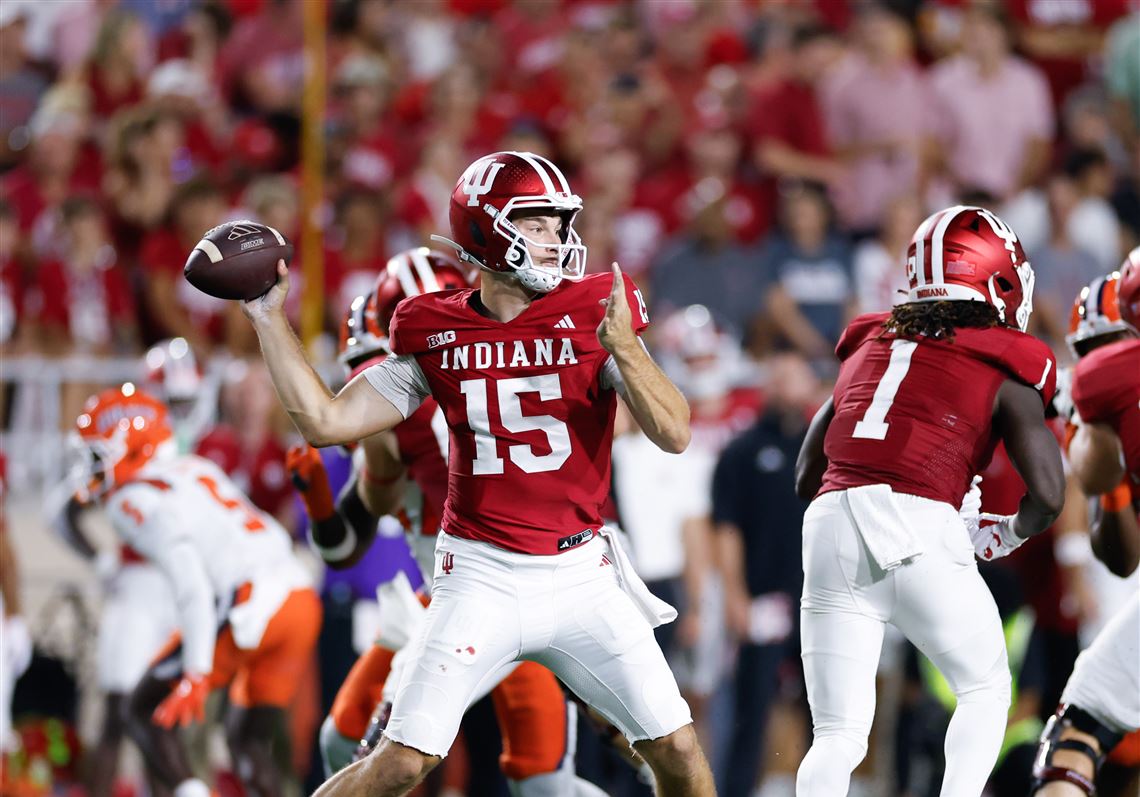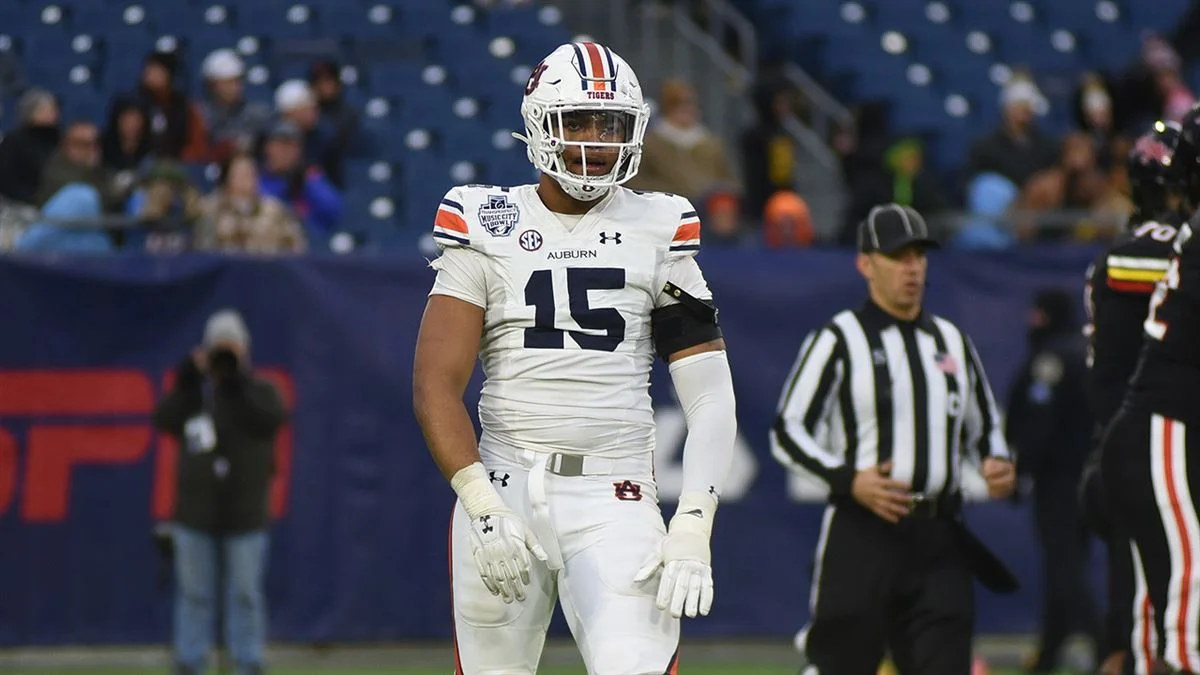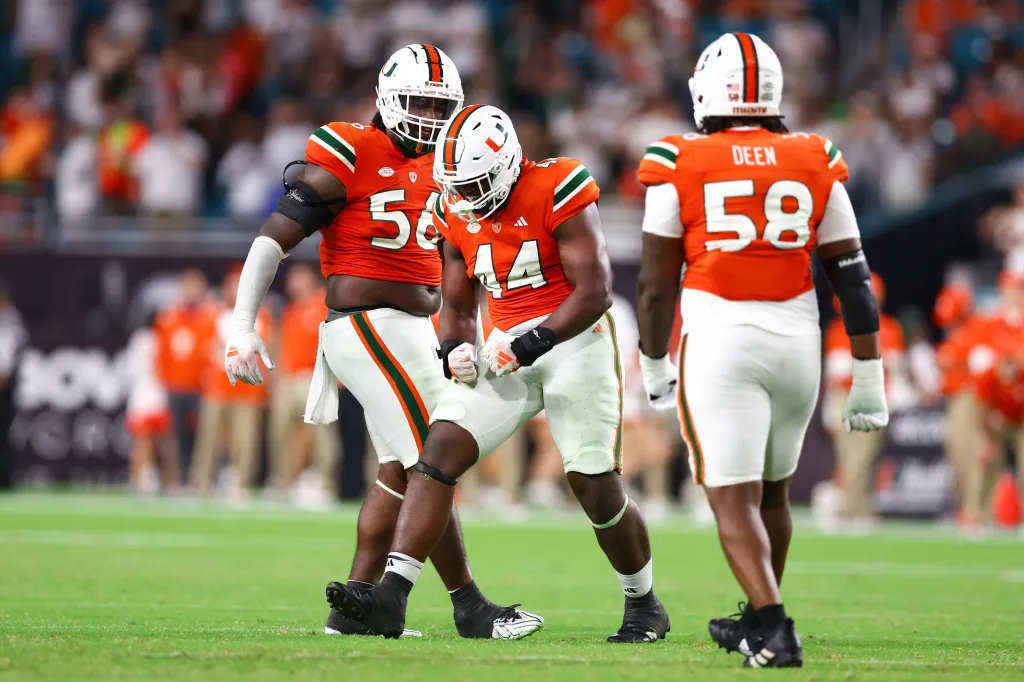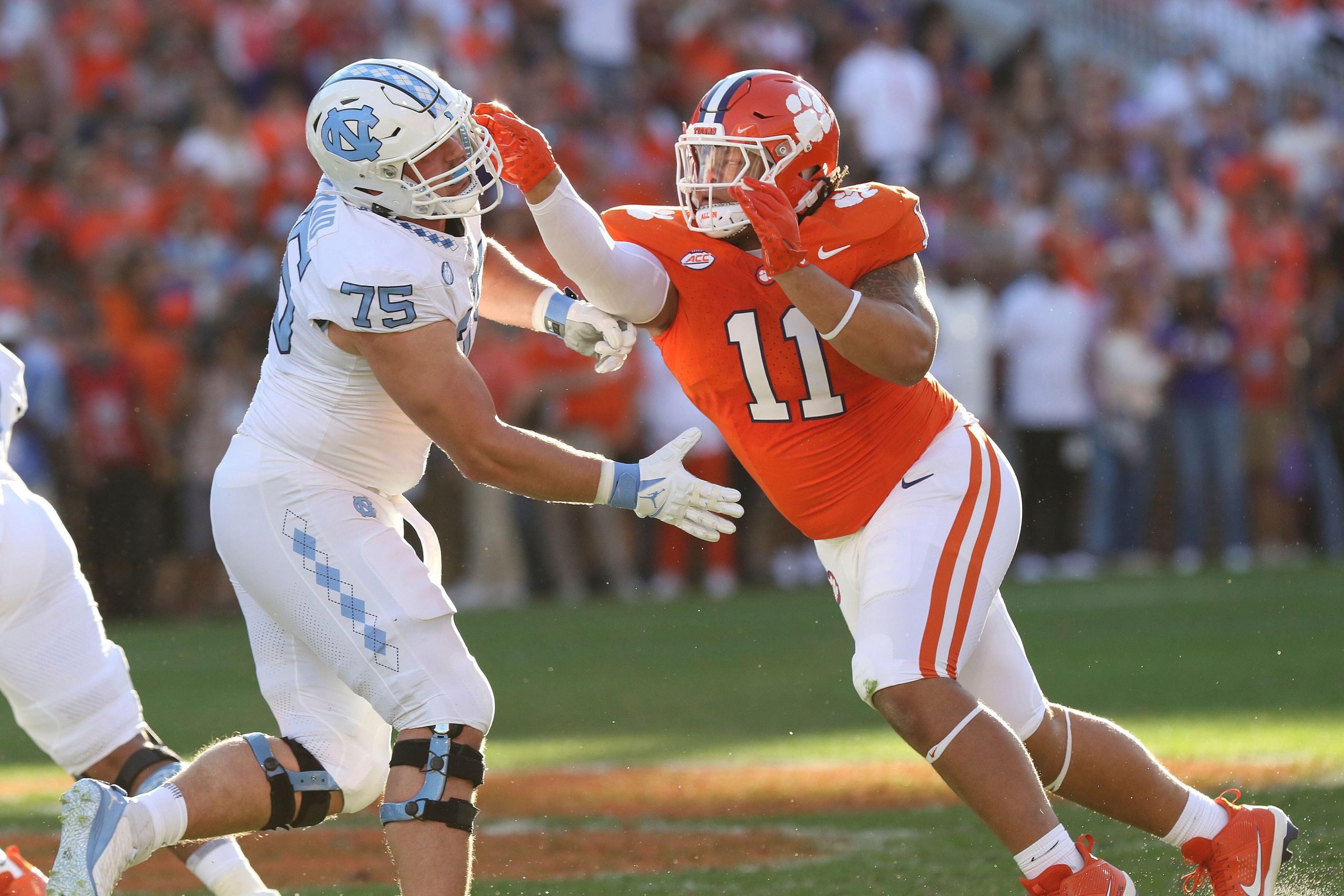By Charlie Campbell.
Send Charlie an e-mail here: [email protected]
Follow Charlie on Twitter @draftcampbell for updates.
This page was last updated March 5, 2014. Follow me @walterfootball for updates.
Position Review: Tight Ends
Tight End Class
Early-round talent: A+
Mid-round: B
Late-round: B-
Overall grade: A-
2014 prospects vs 2013
Eric Ebron > Tyler Eifert
Austin Seferian-Jenkins > Zach Ertz
Jace Amaro > Gavin Escobar
Troy Niklas > Vance McDonald
Xavier Grimble < Travis Kelce
C.J. Fiedorowicz < Jordan Reed
Marcel Jensen < Dion Sims
Arthur Lynch < Levine Toilolo
Tight end is one of the most talented positions in the 2014 NFL Draft class during the early rounds. There is elite talent with some rare prospects. In most years, the top-four tight ends from this class would be the No. 1 tight end prospect. The 2013 class didn’t have the elite talent that this class does, but the 2013 group had good depth.
If you were to merge the two classes, I think Eifert and Ertz would be around the same level as Amaro. As prospects, they aren’t as good as Ebron or Seferian-Jenkins in my opinion. Escobar and McDonald would go behind Niklas and ahead of Grimble. Same with Kelce. Jordan Reed could end up being one of the best steals from last year’s draft, and he should have gone higher. Fiedorowicz, Jensen and Lynch are all about equal to Sims and Toilolo.
Safest Pick: Eric Ebron, North Carolina

This was a tough call because I believe that both Ebron and Seferian-Jenkins are safe picks. I went with Ebron because the NFL is a passing-driven league and Ebron is one of the best receiving tight ends to enter the NFL in years. He’s the best receiving prospect since Rob Gronkowski and Jimmy Graham came into the league, but even then, teams missed on the evaluations of those players, or those two would have been first-round picks. Ebron’s speed and athletic ability makes him look an instant weapon in the passing game. He should have a long career as a pass catcher.
Biggest Bust Potential: Jace Amaro, Texas Tech

WalterFootball.com knows some teams that aren’t high on Amaro. They feel that he doesn’t have enough speed to separate in the NFL and needs work as a blocker. I like Amaro, but those issues are concerning. If his receiving doesn’t translate as well, he doesn’t have anything else to fall back on. Amaro isn’t a blocking, short-yardage player. He should go in the first couple of rounds, but among the top-four tight ends, he has the most boom or bust potential.
Tight End Rankings by Attributes
Pass Receiving:
NFL prototype: Jimmy Graham, Saints
- Eric Ebron
- Jace Amaro
- Austin Seferian-Jenkins
- Troy Niklas
- Xavier Grimble
- Marcel Jensen
- C.J. Fiedorowicz
- Arthur Lynch
Recap: The NFL has evolved to the point where tight ends are a critical part to a potent passing attack. Some teams have better receiving weapons at tight end than they do at receiver. The league is driven by passing, so if a tight end can’t contribute as a receiver, he could have a hard time seeing the field. The 2014 NFL Draft has a nice group of receiving tight ends.
Ebron is the clear-cut top of the class. He has rare athletic ability to possibly be one of the elite pass-receiving tight ends in the NFL. Ebron is like having another wide receiver on the field. He is very fast with mismatch speed to get separation and run away from defensive backs. Ebron can burn man or zone coverage with the ability to produce long touchdowns. In college, he killed teams down the middle of the field with his speed and athleticism. Ebron is a matchup nightmare for the NFL.
Behind Ebron is Amaro. Last year, Amaro caught over 100 passes and dominated the Big XII. He has some quickness and is a good route-runner. Amaro is dangerous down the middle of the field and is too big for defensive backs.
Seferian-Jenkins could have been listed above Ebron and Amaro a year ago. Seferian-Jenkins’ sophomore season was statistically similar to Ebron’s 2013 season. Seferian-Jenkins has been a tough receiver for three years, and in the NFL, he should be a dangerous weapon in the passing game.
Niklas had only 32 receptions last year, but he’s a better receiver than that total indicates. If Niklas had had a solid quarterback, his production could have been doubled. Niklas has surprising speed and quickness for a big tight end.
Grimble is another tight end who was held back by his quarterback – and injuries – but Grimble has a lot of athleticism. He has upside as a receiver and could be sleeper pick who rewards the team that drafts him.
Jensen was a good receiver for Derek Carr, but they beat up on some weak competition. Fiedorowicz has some surprising athletic ability and quickness. He will mainly be a blocking tight end, but he could be a bit of secret receiving weapon because teams will concentrate on others. Lynch is also more of a blocking tight end for the NFL.
Blocking:
NFL prototype: Heath Miller, Steelers
- C.J. Fiedorowicz
- Troy Niklas
- Arthur Lynch
- Austin Seferian-Jenkins
- Eric Ebron
- Jace Amaro
- Xavier Grimble
- Marcel Jensen
Recap: Blocking ability is still important for NFL tight ends; not just in the ground game, but in pass protection. Teams like their tight ends to have the ability to help tackles when they’re going against an elite edge rusher. The top blocking tight end in the 2014 class could be Marshall’s Crockett Gilmore, but the tight ends above are more well rounded and are higher-rated consensus prospects than Gilmore.
The best blocker of the group above is Fiedorowicz. He was a strong edge blocker for Iowa over the past few seasons. Fiedorowicz is strong at the point of attack and can push defenders out of the play. He can also tag-team with an offensive tackle to seal the edge. Fiedorowicz definitely has the capacity to be a tough blocking tight end who will be an asset in short-yardage and goal-line situations.
Niklas is also a very good blocker who was prepared well at Notre Dame. He is strong and blocks with some power. Georgia coached up Lynch well. He is a good technician as a blocker and contributed to Todd Gurley having good holes on the ground.
Some media have dinged Seferian-Jenkins for his blocking ability, but I think that criticism is off base. I felt Seferian-Jenkins did an overall good job last year blocking for Bishop Sankey. Seferian-Jenkins showed improvement over his career, and he has good size to be a blocker in the NFL. I think Seferian-Jenkins could develop into being an extremely well-rounded tight end for the next level.
Ebron has blocking potential as well. He has some natural strength and gets to blocks on the second level. Ebron should be a solid contributor as a blocker.
Amaro has to improve his blocking for the NFL. He needs to make big strides there, but he has size and strength to work with. It isn’t all his fault as Texas Tech’s spread offense really didn’t prepare him for pro blocking. Grimble and Jensen both have to add strength. They both need to develop their blocking ability for the NFL.
Red Zone:
NFL prototype: Tony Gonzalez, Falcons
- Austin Seferian-Jenkins
- Troy Niklas
- C.J. Fiedorowicz
- Jace Amaro
- Eric Ebron
- Arthur Lynch
- Xavier Grimble
- Marcel Jensen
Recap: Tight ends are critical players in the red zone. Multiple tight ends are needed for goal-line packages. Many teams also like to use double-tight end sets inside the 20-yard line. A tight end who is a big target with sure hands and leaping ability is a good weapon to help produce touchdowns instead of field goals. In last year’s tight end review I wrote this, “The best red-zone tight end in the 2013 NFL Draft class is UCLA’s Joseph Fauria. The 6-foot-7 Bruin had 11 touchdowns last year. He is a third-day pick.” Teams undervalued Fauria’s red-zone prowess in the 2013 NFL Draft – much to the delight of the Lions. This year, there are some good red-zone weapons, but different from Fauria.
Seferian-Jenkins (6-5, 262) was the most productive in the red zone of this group of tight ends. He used his big frame and leaping ability to make tough receptions for Washington. Seferian-Jenkins is also skilled at finding openings for his signal-caller running down the middle. He led them all of these tight ends with eight touchdowns in 2013. Seferian-Jenkins was remarkably consistent with 21 touchdowns over the last three years. He could be a red-zone stud in the NFL.
Niklas (6-6, 270) is a similar specimen to Seferian-Jenkins. Niklas had five scores last year, but it would have been more with better quarterback play. He should be a red-zone weapon in the NFL.
Fiedorowicz is an underrated red-zone contributor. He had six scores last year. Fiedorowicz is a good blocker as well, so he should be a big part of the red-zone offense in the condensed field. The 6-foot-5, 265-pounder has the size to beat defenders in the end zone.
Amaro’s ability to go up and make contested catches makes him valuable in the red zone. The 6-foot-5, 265-pounder had seven touchdown catches last year, and if his blocking improves, he’ll be a good tool for the red zone.
Surprisingly, Ebron had only three touchdowns last season. He has the leaping ability and acrobatic athleticism to be weapon on fade passes and working the back of the end zone. Ebron should produce more scores in the NFL. Lynch had five scores last year and caught some teams napping on him. Grimble only had two scores while Jensen had three.
Speed:
NFL prototype: Vernon Davis, 49ers
- Eric Ebron
- Austin Seferian-Jenkins
- Troy Niklas
- Xavier Grimble
- Jace Amaro
- Marcel Jensen
- C.J. Fiedorowicz
- Arthur Lynch
Recap: The NFL is all about mismatches, and tight ends with speed are going to provide a mismatch on a weekly basis. Few teams have linebackers or safeties who can match up against an elite tight end.
The fastest player in this group is Ebron. He has the speed to beat defenders in man coverage and get down the field quickly. For the NFL, Ebron’s speed should be a big problem. He is too fast for linebackers and most safeties, while being too big for cornerbacks. Ebron’s rare speed makes him a huge mismatch advantage for his offense.
You might be surprised to see Seferian-Jenkins second, but in 2013, he was banged up and didn’t have the speed he displayed in previous seasons. I remember in one of his first games as a freshman, Lavonte David and Seferian-Jenkins were battling each other, and the speedy David was being challenged by Seferian-Jenkins. Seferian-Jenkins has some underrated speed and explosiveness.
Niklas and Grimble also have some good speed. Each one flashed that in college. Amaro’s speed is a bit of a question mark, and his slow 40s at the Combine only added to that. He is quicker than he is fast.
Jensen, Fiedorowicz and Lynch aren’t particularly slow, but they won’t present speed mismatches in the NFL.
Hands:
NFL prototype: Jason Witten, Cowboys
- Jace Amaro
- Troy Niklas
- Eric Ebron
- C.J. Fiedorowicz
- Austin Seferian-Jenkins
- Marcel Jensen
- Arthur Lynch
- Xavier Grimble
Recap: Tight ends with bad hands don’t get thrown the ball often in the NFL. They have a hard time seeing the field and end up only playing in goal line situations and on special teams. In the group above, there isn’t a player that I would say has bad hands.
Amaro, Ebron and Niklas all have really good hands. I think Amaro is the most sure-handed of the three. There are plays where it seems like he has glue on his hands. A drop is a rare sight from any of these three.
Fiedorowicz’s hands were steady in college and at the Senior Bowl. He should be reliable in the NFL. Seferian-Jenkins was a reliable receiver for Washington, but had a few drops last year. He could use some work with the Jugs machine in the NFL.
Jensen, Grimble and Lynch all had good hands last season. You wouldn’t say that any of them had bad hands.
H-Back:
NFL prototype: Charles Clay, Dolphins
- Eric Ebron
- Xavier Grimble
- Marcel Jensen
- Jace Amaro
- Austin Seferian-Jenkins
- Troy Niklas
- C.J. Fiedorowicz
- Arthur Lynch
Recap: Many offensive coordinators like tight ends with the flexibility to line up as an h-back. That allows them to set up more mismatches and align blocking schemes differently. Not all tight ends have the athletic ability and quickness to pull off h-back responsibilities. Aaron Hernandez was superb at it for New England and was the prototype a year ago. Charles Clay and Jordan Reed could be the top h-back tight ends in the near future, unless Ebron is used in that role.
Ebron is the best h-back tight end of all the prospects in the 2014 NFL Draft class. He has experience lining up in a variety of places and is so versatile, he played some defensive end in 2012. Ebron is so athletic and tough could possibly play some fullback in the NFL.
After Ebron, Grimble (6-4, 257) would be the next best option to play as a h-back. He is lighter than the other tight ends, so he has more agility.
Jensen and Amaro could play some h-back, but aren’t natural fits. It would be interesting to see if Seferian-Jenkins or Niklas could pull off some h-back plays, but they are oversized for that role.
Fiedorowicz and Lynch are also oversized and neither of them looks like a fit for h-back.
Downfield Threat:
NFL prototype: Jimmy Graham, Saints
- Eric Ebron
- Jace Amaro
- Austin Seferian-Jenkins
- Troy Niklas
- Xavier Grimble
- Marcel Jensen
- C.J. Fiedorowicz
- Arthur Lynch
Recap: Teams have had success in recent years with tight ends being used to stretch the field down the middle seam. Big plays through the air aren’t limited to just receivers as there are a number of tight ends who can get vertical. Burning a secondary with a tight end is another weapon for offenses that make a defense’s job much tougher.
Projecting to the NFL, Ebron is so fast he can hurt a defense downfield. He made a number of catches for long gains as he pulled away from defenders.
Amaro had similar success going downfield at Texas Tech, but he isn’t as fast as Ebron. Seferian-Jenkins made some big catches downfield in college. He does a nice job of flashing into downfield openings.
Niklas and Grimble both have the quickness and athleticism to get downfield. They could’ve produced more in college if they had been given the opportunities.
Jensen has nice release off the line to along with some quickness. Fiedorowicz and Lynch are bigger and look more likely to be effective on short routes.
Yards After Catch:
NFL prototype: Ron Gronkowski, Patriots
- Eric Ebron
- Jace Amaro
- Austin Seferian-Jenkins
- Troy Niklas
- Marcel Jensen
- Xavier Grimble
- Arthur Lynch
- C.J. Fiedorowicz
Recap: There are some tight ends in the NFL who are very dangerous with the ball in their hands. Having the ability to pick up yards after the catch (YAC) is not an easy trait to find in tight ends. This class has some nice options.
Ebron is a natural runner with the ball in his hands and explodes down the field for extra yards. He has vision, shiftiness and knows how to weave through traffic. In the NFL, Ebron could be a nice weapon on screen passes.
Amaro, Seferian-Jenkins and Niklas all run well with the ball in their hands. Beyond their quickness, they are big loads who can be tough to bring down. Amaro got a lot of yards after the catch last year, and Niklas showed some impressive YAC in 2013.
Jensen and Grimble can pick up yards when hit on the run. Lynch and Fiedorowicz probably won’t get a lot of yards after the catch as professionals. They are effectively lumberers going against the speed of NFL defensive backs and linebackers.
NFL Picks - Jan. 8
2026 NFL Mock Draft - Jan. 7
NFL Power Rankings - Jan. 5
Fantasy Football Rankings - Sept. 1




